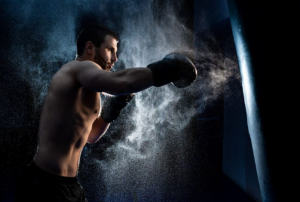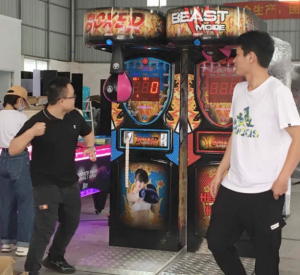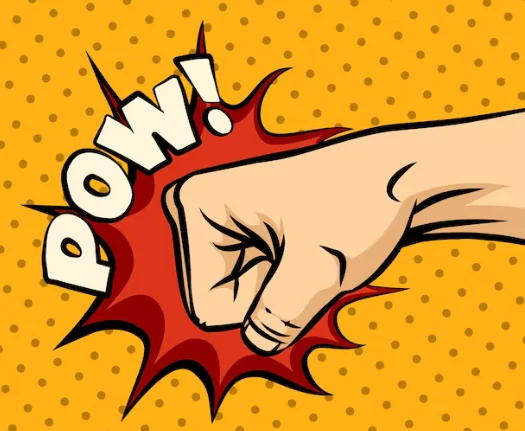Location plays a primary role in determining the success of claw machines in terms of selecting areas of high footfall, high demand for consumers, ease of locating and accessing the machine, and, finally, periodic analysis of competition for readjustments in prizes for effective profitability and engagement of customers.
Table of Contents
ToggleMarket Demand
Market demand is the very basis of any claw machine success. Market demand varies between regions, and the level of demand is often influenced by the population structure, economic conditions, and consumption habits in that area. Take, for example, the claw machines located in commercial centers: these usually have high market demand because the large flow of people in those areas also implies that there will be consumers willing to spend money on entertainment activities. In these aspects, the claw machine can satisfy more additional needs of customers in shopping and entertainment, become a part of the consumer experience.
And it is impossible to neglect the influence brought by the population structure to the market demand. Teenagers and young adults are always the main targets of the claw machine. It can be sure that when the proportion of young people in this area is relatively higher, the market demand will be relatively larger. These young consumers not only enjoy trying new forms of entertainment but are also willing to spend money on interactive experiences. The core demographic for the machines is the 8-35 age group, particularly in areas where young people congregate such as campuses and commercial districts, where the revenue performance of the claw machines is outstanding.
When considering the market demand, it is also important to take into account consumer purchasing power and economic level. The higher the income of residents in a region, the higher the setting of the claw machine pricing can be, and the prizes offered can also be more attractive. If it’s a market belonging to a low spending power region, then the claw machine should make its pricing strategy more flexible to fit the budgets and consumption habits of consumers. In smaller towns, the claw machines may suit lower prices of games or smaller prizes to attract more customers.
Customer Behavior
The key to success with the claw machines lies in customer behavior. In various regions, different customers develop different habits of consumption. The frequency of use and game experience will be directly related to this very factor. Besides that, customer behavior is distinct in shopping malls, entertainment places, and transport centers. Because of this, there is a need to work out proper design and strategy for operating the claw machine.
Compared with the other places, customers would spend more time shopping and enjoying entertainment in shopping malls. Therefore, customers will invest more time and money in the claw machine. Normally, such customers value the experience of entertainment and want to gain a sense of value from the entertainment. In order to meet such customers’ needs, the design of the claw machine can be designed to be more refined and offer prizes with higher value, such as well-known brand plush toys or limited edition items.
By contrast, customers in transport hubs or busy commercial areas may be very time-limited, which will call for an experience that is quick as well as easy. Many of these customers tend to be commuters who often have to wait for a short length of time and thus are not apt to spend too much time on the operation of a complex claw machine. Consequently, the design of the claw machines should be very simple and easy to use with the aim of attracting hurried passersby. Statistics show that for game machines near traffic centers, the average playing time is 1-2 minutes, while if placed in shopping malls, the average playing time can reach 3-5 minutes. Therefore, it is necessary to adjust the setting of game time according to the location.
Seasonal factors and holidays can also have an effect on consumers. The number of people flowing into malls and entertainment centers massively increases during holiday periods, and the frequency of using a claw machine can increase greatly. Therefore, in order to exploit this opportunity, operators can configure certain themes or promotions before and after holidays to attract more customers. For example, during holidays like Christmas or Chinese New Year, the prizes for claw machines can be set as items related to these holidays, further stimulating consumer interest.

Competitive Landscape
The competitive landscape is very important in determining the sustainability of claw machines in a certain location. It will affect the pricing that shall be utilized with the machines, the prizes to be offered, and the overall strategy. If there are many claw machines, as well as other forms of entertainment equipment within a region, newly installed machines may face severe competitive pressure. It’s very essential to understand the strategies of competitors.
Operators need to consider the quantity of competitors’ machines, variety of game difficulties, prize varieties, and pricing. When facing much more similar entertainment machines within a highly concentrated area, it is very important to pursue differentiation strategies against customers. For example, prizes unique or limited in quantity will result in a differentiation effect compared to other machines. In addition, for design aspects, the claw machine can be designed to be more personalized, such as painting in bright colors or adopting a stronger interactive element in order to raise customer interest.
Highly competitive areas normally require higher operation costs; therefore, operators can consider increasing customer loyalty by offering extra service or activities. In the example, the operation of regular competitions on claw machines and offering membership cards can boost repeat customers. With differentiation and planning of events, the profitability of the claw machines located in the highly competitive areas can be lifted up 15%-20% or so.
Conversely, if there are fewer devices in the area and poor market competition, operators will have leeway to increase the number of machines or coverage for the sole purpose of reaping a market share. In this case, early market advantage shall be grasped because once saturated, it may subsequently become a challenge for the next entrants.
Foot Traffic Patterns
Success or failure is directly affected by the size and distribution of foot traffic coming to a claw machine. Generally, high-traffic areas present more potential customers, but again, it is not solely the number of foot traffic that matters but the pattern in which the foot traffic flows. These patterns include the flow of movement, time it takes for customers to stay there, and crowd composition.
This would usually face the elevator entrance, main corridor, or an entrance in shopping malls. However, overly busy areas result in little time for customers to stop and play the game. While a mall entrance claw machine may be able to draw more eyeballs, since people often enter or exit in a rush, actual engagement might be low. In contrast, the claw machines near the elevator or center parts, where customers usually stay, result in higher participation rates.
Another point that is worthy of consideration is the time distribution of foot traffic. In some places, there can be obvious peaks and troughs in the flow of people. For example, the claw machines located near office buildings may enjoy good business during lunchtime or after work but are relatively slow when it comes to other times. At this point, operators can observe and analyze the peak traffic time in order to adjust operating time for the machine, even launch promotional events in certain periods to attract more customers.
Changes in foot traffic patterns may also be affected by holidays or special events. During shopping festivals or promotional periods, the flow of people within malls or places of entertainment dramatically increases, and the revenue generated by the claw machine goes one step further. For such opportunities, operators can adjust settings before and after events, bring in special limited-time prizes, or increase publicity to boost the attractiveness of machines.
Rent and Operating Costs
And the rental and operational cost is a critical consideration for operating a claw machine. The rental level varies greatly depending on the location, and it directly determines the profitability of a claw machine. While the shopping malls and busy commercial areas boast the greatest foot traffic with high market demand, so do the rent costs. Only if the investment return is big enough, then the operator can ensure profitability at the high-rent area.
This would include the variance of monthly rents, maintenance of equipment, prizes, wearing, and tearing of machines, and processing fees. Normally, a machine’s total operating cost has 30% to 50% going to rent, while the rest is for the maintenance of the equipment and other everyday operating expenses. A good example would be the frequency and rate of wear and tear, which are most frequent in shopping malls due to the highly concentrated flow of people; that would raise the operating expenses correspondingly. Such costs are offset, for instance, by operators’ strategies of constantly changing prize types or optimizing game difficulty to increase profitability.
For some claw machine operators with relatively low budgets, it would be better to choose a location that rents relatively lower, such as community malls or supermarkets. Though there is a chance that large numbers of customers may not visit these places, relatively lower rent means better security for long-term operation. However, usually, low-rent locations go hand in hand with lower consumer spending power; thus, in these cases, price and prize selection should be more cautious
in order to encourage customer participation.
Operators can also save money on rental by sharing space. Some amusement places or movie theaters will have to offer a partnership with the owner of the claw machines by sharing the rent and income that will be generated. This kind of partnership model can help greatly lower the rent while boosting exposure for the machines through the customer flow of that partner.

Brand Exposure
Brand exposure is indispensable for the long-term development of a claw machine. The claw machine is not only an entertaining device but also a promotional tool for brands in places with large flows of people. It is easy to see that putting machines in visible places provides more exposure opportunities, and brand recognition can be further enhanced by customer interaction.
Some claw-machine operators collaborate with renowned brands for customized machines in order to attract certain consumers. In addition, the operators can create unique characteristics and appeal for the machine by cooperating with popular anime or movie brands to launch themed claw machines, which may attract not only brand fans but also create unique characteristics and appeal for the machine. Customized claw machines usually bring in 30%-50% more revenue than regular machines in the initial launch phase.
Social media also acts as an important way for the exposure of the claw machine brand. Nowadays, customers would share photos or videos of the prize they won through social platforms. In addition, in order to attract customers’ sharing, operators can prepare special prizes or hold online and offline interactive activities. More people will be attracted to check in or participate in such activities as prize-sharing raffles, which will help promote the claw machine brand proactively.
Accessibility of Location
It directly determines whether customers are willing to participate because of the accessibility of the claw machine. Even being placed in a high-foot-traffic area, if hard to find and not convenient to reach, it may lead to customer loss. In choosing a location, an operator has to choose a place where customers can easily find and conveniently reach. In a mall, a main corridor, an elevator entrance, or escalator area is an ideal placement spot.
It’s not only about the place, but it is also about how easy it is to pay or operate the machine. Nowadays, many claw machines support mobile payments, such as WeChat Pay and Alipay. These payment methods greatly raise customer participation rates because customers do not need to have cash in their pockets. According to statistics, participation rates of those products which support mobile payments are 40% higher than those receiving cash only.
The design of the mechanical claw game should be attractive and convenient to operate. Some machines use lights, sound prompts, and interactions to enhance the customer experience in order to make the machine noticeable. Operators can also set up signs or posters near the machine to guide customers to understand the better operation of the rules of games with improvement of user experience.




